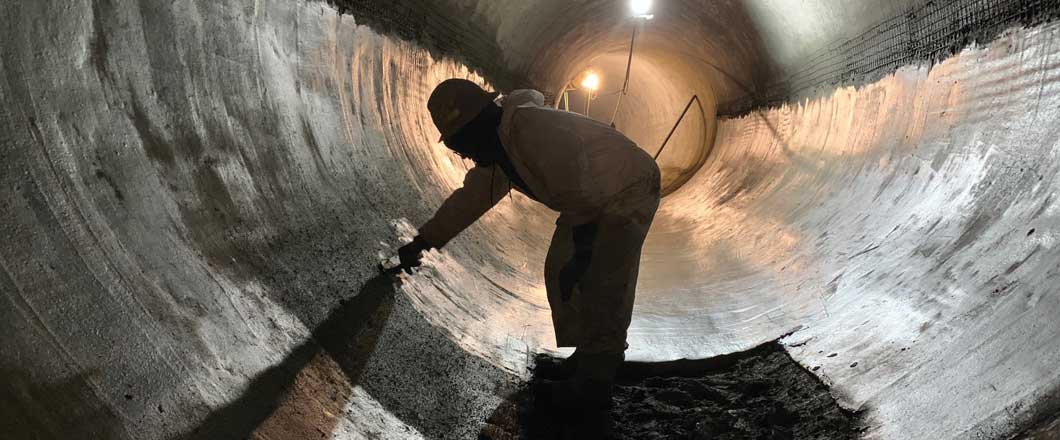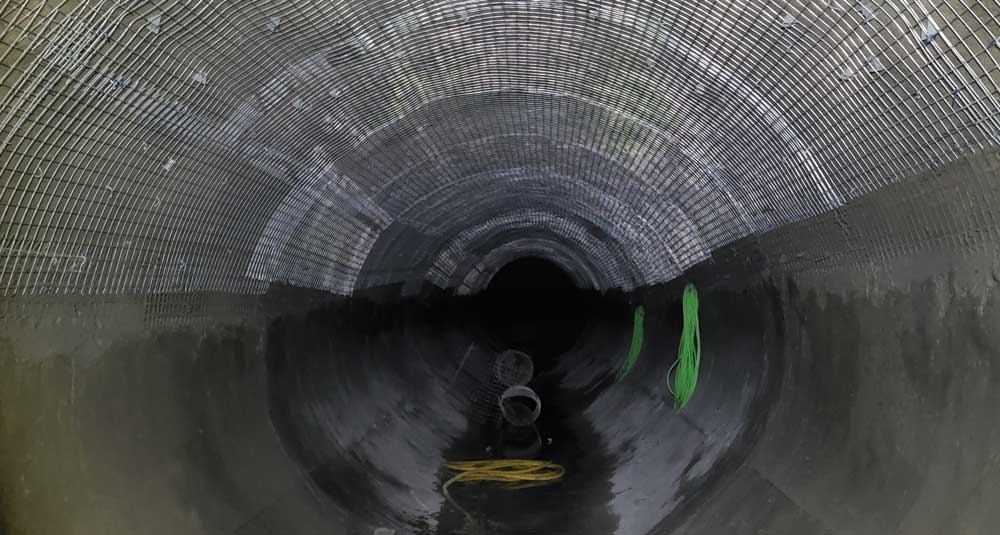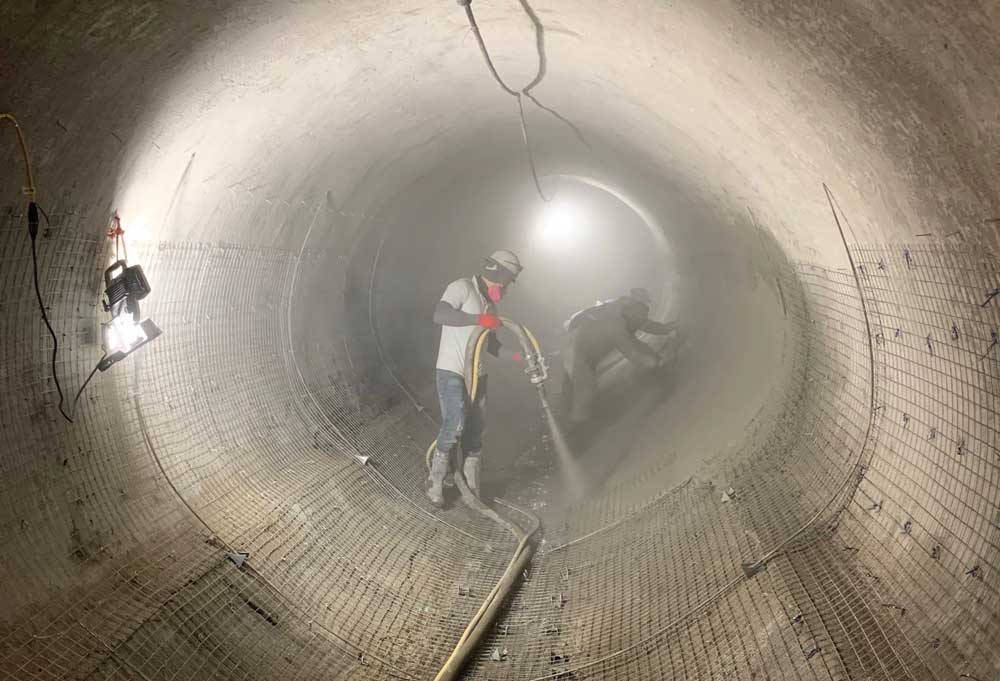Toronto Spray-applied Project Requires Additional Attention

The rehabilitation of the Wilket Creek Sanitary Trunk Sewer and the North York Storm Trunk Sewer project in Toronto had a little bit of everything when it comes to construction methodologies.
This $23.25 million project to rehabilitate approximately 2,280 m of trunk sewers highlights the benefits of several trenchless methods – cured-in-place pipe (CIPP) lining, glass reinforced plastic (GRP) sliplining and spray-applied shotcrete lining. The last leg to be completed was the spray-applied shotcrete relining of a 130-m section of the North York Storm Trunk Sewer that connected to the sliplined portion on one end and terminated at the storms sewer’s outfall at the Black Creek on the other.
Capital Sewer Services (CSS), a division of Capital Infrastructure Group (CIG), of Vaughan, Ontario, tackled the project from beginning to end using mainly its in-house crews further highlighting the benefits of having a fully integrated prime contractor to achieve project efficiencies.
Unlike the bulk of the North York Storm Trunk Sewer, which is corrugated metal pipe (CMP) — and was sliplined using GRP panels — this section is 3,000-mm reinforced concrete pipe (RCP) with an existing cement mortar-lined surface. Toronto Water chose to have the section rehabilitated using shotcrete to improve hydraulic capacity and bring it back to a more circular profile by filling in voids and creating a uniform depth of coverage to protect the host pipe.

Challenges Appear
The CSS team began this portion of the project in February and completed it in early June and faced — and overcame — several challenges along the way. The first challenge hit the team before one ounce of shotcrete was applied.
“What we found when we first investigated the pipe was that it was far worse condition than originally expected,” says Tyler Leeming, CSS project manager.
The CSS team, with the help of its shotcrete consultant Jose Giron, of Integrity Shotcrete, found areas of significant deterioration of the existing concrete. There were large sections where voids existed behind a previously applied layer of shotcrete in addition to a poured CIP concrete invert. These sections were not recorded in the original inspection of the storm sewer.
“He was critical to the project. Jose brought a wealth of experience to help guide us through the project. He reviewed the condition of the pipe and gave his expert opinion to ensure we were delivering the highest quality result for this project,” says Leeming. “He is one of the reasons we were able to get in there and identify areas where the existing repairs were poor.”
Before beginning the application, The CSS team had to go in using chippers to remove the loose and deteriorated concrete. The full surface area of the existing concrete surface was bush hammered and then sandblasted to prepare a suitable substrate to for the newly applied shotcrete. The larger voids were filled using hydrophilic grout and polyurethanes. Injection grouts were required in areas of high hydraulic water pressures to stop any leaks prior to the shotcrete application. Galvanized welded wire mesh was installed as reinforcing and secured to the existing concrete prior to shotcrete application.

In addition to Giron and his team of specialists, CSS had three Ontario Ministry of Transportation (MTO) nozzlemen on the project to apply the MS-W1 shotcrete from King Shotcrete Solutions. Based on the additional sections found to have large voids, Leeming estimates that the CSS team used three times more shotcrete than the project originally called for.
The next challenge came in the form of an unusually wet late winter into early spring. Going into this segment of work, the CSS team realized it would be best to increase the bypassing capacity, as well as build a temporary dike in the pipe to keep excessive water from flowing through this 130-m leg.
“We had many rain events and prior to work beginning, we decided to upsize our bypass by three times with the addition of pumps and increasing the discharge piping. Even on a small rain event [we noticed] there was a substantial amount of influent coming down the pipe quickly and in huge volumes,” says Leeming. “We were able to keep up, during normal flow, with one pump, but when the rain came down, all pumps were operational. Despite the additional bypass capacity, we still had a little spillover.”

Key Takeaways
The team focused first on the top half of the pipe — prep, grout, clean — still a challenge because the team could not be guaranteed two weeks straight of dry weather. Based on the weather in the spring, there were some weeks where crews were only able to work for two days on this section of the pipe. To combat this challenge, CSS brought in extra crew members to work later into the day, and on weekends when needed.
One of the key takeaways the CSS team learned is the importance of conducting their own inspections on the quality of the pipe before starting any project. A thorough man entry inspection reveals much more than a CCTV inspection. In this case, the man-entry found the voids behind the existing shotcrete repairs.
Another is the importance of upsizing the bypass to account for excessive wet-weather events that resulted in an extended work window.
“We hired Jose and his team to support us for the duration of the project; to help work through any issues that we had not faced before,” Leeming says. “His team helped us come up with the unique approaches we were able to execute to complete the project in a cost-effective manner.”